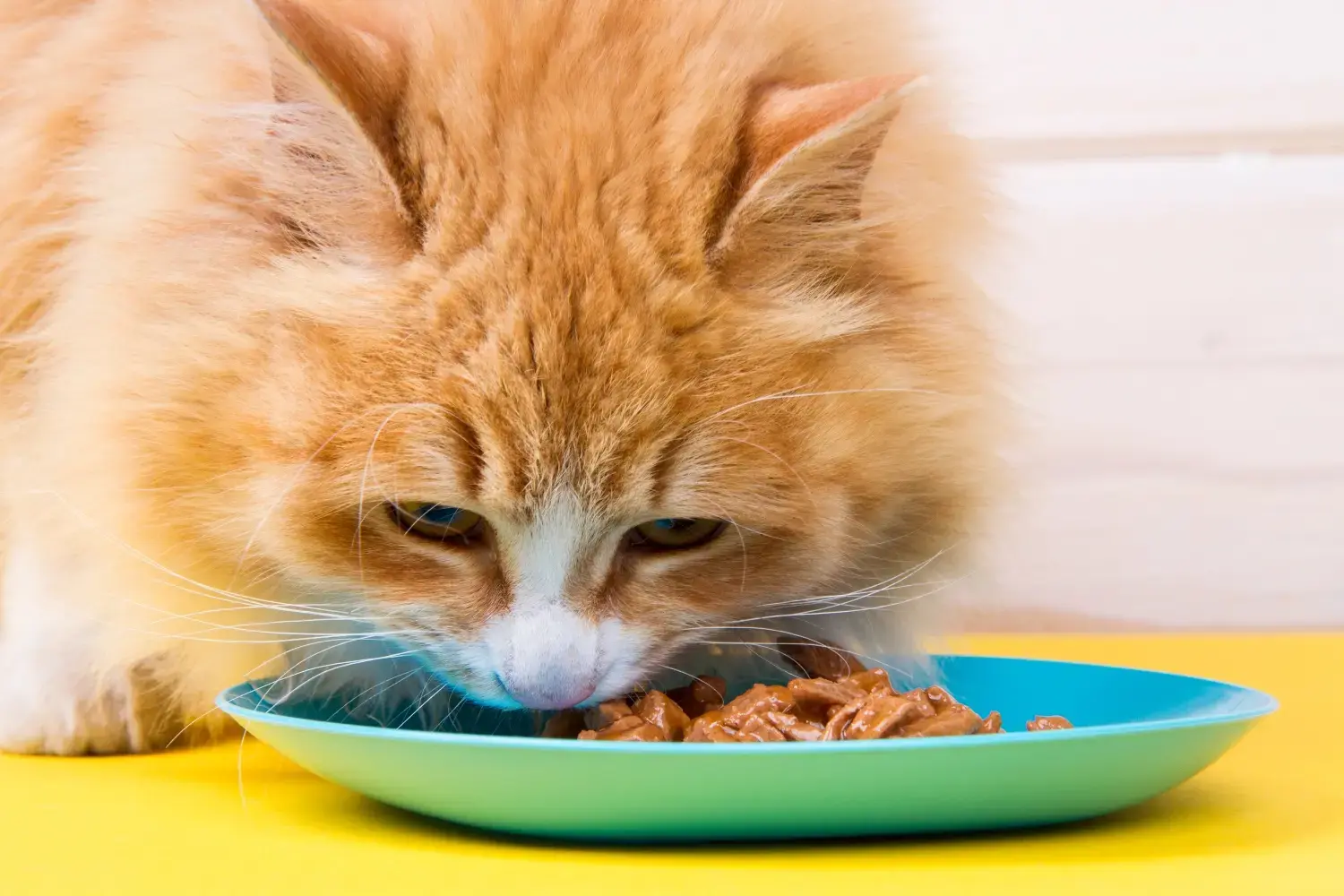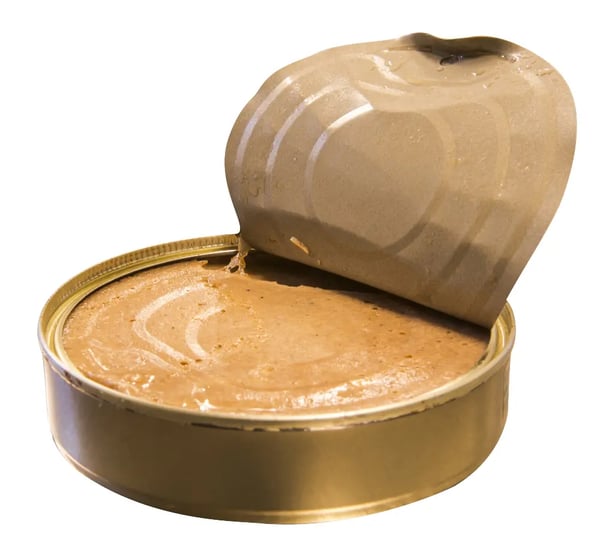
Is wet food good for dogs and cats? Wet food for pets is loaded with nutrients, so we can feel good about feeding it to our furry friends. Check out some wet food feeding tips for dogs and cats.
We know now that it's a myth that wet food is harmful to dogs and cats. In fact, canned food has some distinct benefits from dry kibble that should convince you to include it as a supplement, if not part of your pet's regular diet.
However, canned food is unique and requires some different feeding instructions from dry food. In this post we will help you find answers to common questions like:
-
- How long can wet dog food sit out?
- Can cats eat wet dog food and vice versa?
- Can I mix wet and dry pet food?
- How should I store leftover canned pet food?
Stick around to get these answers and many more tips and tricks to get your pet started on wet food or to improve the safety and effectiveness of your pet's current wet food diet.
16 Wet Food Feeding Tips for Dogs and Cats
If you feed your cat wet food, even if it's just part of your cat's regular diet, there are some things you should know that can help you keep your kitty safe, healthy, and happy. What you feed your cat is important, but how you feed it can have a pretty big impact too.
Here are 16 tips for feeding your dog or cat a wet food diet:
1. Feed Canned Food Often
Feed wet food to your pet at least once daily to keep your pet well-hydrated, particularly if you have a cat. At about 70% moisture, compared with 10% moisture for dry food, canned food has a moisture content that is closer to your pet's natural prey diet.
Wet cat food and wet dog food can be fed as a treat, a side dish, a meal topper, or as a complete diet.
2. Quality Matters
While canned food is generally better for your pet than dry kibble, the same quality rules apply. Look for canned foods with high meat content (such as chicken, beef, or lamb) and with a few carbohydrates, such as rice, wheat, or corn.
Generally speaking, canned food will have more meat protein and fewer carbohydrates than kibble. Canned food often has fewer ingredients in general, making it easier to look for wet dog food and canned cat food that uses high-quality ingredients.
3. Don't Leave it Out
While canned food should be okay for your pet to eat after several hours at room temperature (due to differences in your pet's digestive system), it's still a good idea to remove and discard any food that hasn't been eaten within 30 minutes.
This way, you can limit any risk of food contamination and discourage grazing, which can lead to overeating and obesity.
4. Store Properly
Store leftovers in a separate glass container in the refrigerator or in the can with a firmly fitting plastic lid or covered with plastic wrap for no more than 5 days to ensure freshness and integrity.
Can lids, like the Homes Alive Pets Can Cover, can help to keep the food fresh in the fridge for up to 3 days so that you never waste wet food for cats and dogs again.
5. Avoid Plastic
Don't store your pet's leftovers in plastic. While food storage plastics should not contain BPA, plastic can impart a bad taste to the food, especially to your pet's super-sensitive palate.
Plastic can also scratch easily, leading to bacteria building up in the container, no matter how well you wash it.
6. Start Similar
If your pet isn't used to wet food, start with canned food that is made up of similar ingredients to your pet's regular dry food. Also, you can mix wet and dry foods together if your pet is still unsure.
7. Choose Variety
Feed a variety of wet foods for your dog or cat's best health. Rotating proteins and formulas will give your dog or cat a better variety of nutrients, like amino acids, vitamins, minerals, and fatty acids.
Many wet cat food brands offer at least 2 or 3 flavours to provide variety, and some even offer different textures, like minced, pate, and shredded, to keep the food exciting and prevent picky eating behaviours.
8. Look Out For BPA

Avoid pop-top cans to limit BPA exposure to your dog or cat. Or, choose smaller cans – many do not contain BPA, as opposed to larger cans, which generally do contain at least minimal amounts. BPA has been connected to hyperthyroidism in cats.
Blue Buffalo, Weruva, and Farmina are just a few of the BPA-free brands. Or look for brands that offer wet pet food in pouches or tetra paks.
9. Limit Fish
Limit canned fish varieties for your cat. Other than being addictive for some cats, foods high in fish can also increase your cat's exposure to PBDEs and heavy metals, like mercury, which can increase their risk for hyperthyroidism, among other things.
Larger fish and bottom feeders accumulate higher levels of these no-no's, but a diet that rotates between fish, meat, and eggs will be safe for dogs and cats.
10. Avoid Freezing
Don't freeze canned foods for your pet. Freezing the food won't harm the nutrients or quality, but it can change the texture and taste. Picky pets, especially cats, may turn their nose up at the defrosted food.
11. Watch Portions
Pay attention to individual serving recommendations to prevent over- or under-feeding. Cats and dogs tend to prefer the strong taste and scent of wet pet food to dry foods, so they are more likely to overeat if you aren't careful.
Wet pet food is nutrient-dense but moisture-rich, and it can be difficult to eyeball portion size. Start with the recommendations and adjust as needed for your dog's skin, weight, and activity.
12. Keep Clean
Clean your dog or cat's dish thoroughly after every feeding of wet food. All dog and cat foods can leave behind food particles, no matter how well your pet cleans the bowl. Sanitizing the dish can keep your pet safe and prevent damage to the bowl from bacteria.
13. Illness Recovery

Is your pet recovering from an illness or an upset stomach? Wet food may be the way to go. It's easier for pets to digest than dry food and can restore fluids lost due to diarrhea or vomiting quicker than dry kibble.
14. Weight-Loss Aid
Wet foods help to facilitate a scheduled and healthy feeding routine, which can aid in weight loss and maintenance by eliminating eating due to boredom. Their high water content also helps your pet feel full for longer and reduces cravings and overeating.
Is your pet struggling to lose weight? Check out How to Slim Down an Overweight Cat or Weight Loss Dog Food for more tips.
15. Reduce Allergies
Rotating between several varieties of food is not only better for nutrition, but it's also been possibly linked to a reduction in the development of allergies. Over-sensitization is one of the possible causes of increased dog and cat food allergies.
Wet food offers many flavours and formula choices, so it's easy to maintain and rotational diet.
16. Try, But Not Too Hard
If your cat won't try canned food, try a different texture. Some pets prefer a pate to a shredded style or a chunky gravy formula. Cats, in particular, are fussier when it comes to texture, so they may be more hesitant to make a switch from another type of pet food.
If he still won't try it, don't fret. While canned food can be beneficial to your pet, eating, in general, is more important.
Try introducing the new food more slowly or simply at another time. Never withhold food from your pet for more than 24 hours unless directed by your vet.
Frequently Asked Questions
Is wet food better for my pet than dry kibble?
Wet food can offer several benefits, including higher moisture content, which helps with hydration, and a more appealing texture for pets. It can be a good option for dogs with dental issues or cats who need extra hydration.
How often should I feed my pet wet food?
Feeding frequency depends on your pet's age, size, activity level, and the specific wet food you're using. Generally, adult cats can be fed 2-3 times a day, while puppies and kittens may need more frequent meals.
Can I mix wet and dry food in my pet's diet?
Yes, you can mix wet and dry food to provide variety and balanced nutrition, plus entice a finicky eater. Just ensure that the total daily caloric intake aligns with your pet's needs to prevent overfeeding.
Is wet food suitable for pets with dietary sensitivities or allergies?
Wet food can be beneficial for pets with dietary sensitivities, as it may contain fewer fillers and allergens. Look for options with limited ingredients and novel protein sources. or sensitivities.
How should I store and serve wet food to my pet?
Store sealed wet food according to the manufacturer's instructions, usually in a cool, dry place. Once opened, refrigerate unused portions in a glass or metal-lidded container and use them within a certain timeframe (usually a few days).
Can I solely feed my pet wet food?
Wet food can be a complete and balanced diet if it meets the nutritional requirements of your pet's life stage (puppy, adult, senior) and is formulated to provide all essential nutrients.
.png?width=200&height=66&name=logo%20(1).png)




